SERA Architects have gone before the Design Commission to receive Design Advice on the Modera Davis, a 12 story mixed use building in the Pearl. The 130′-4″ tall building for developer Mill Creek Residential Trust would include 150 residential units and approximately 4,000 sq ft of retail. Parking for 94 vehicles is proposed in two levels of below grade parking.
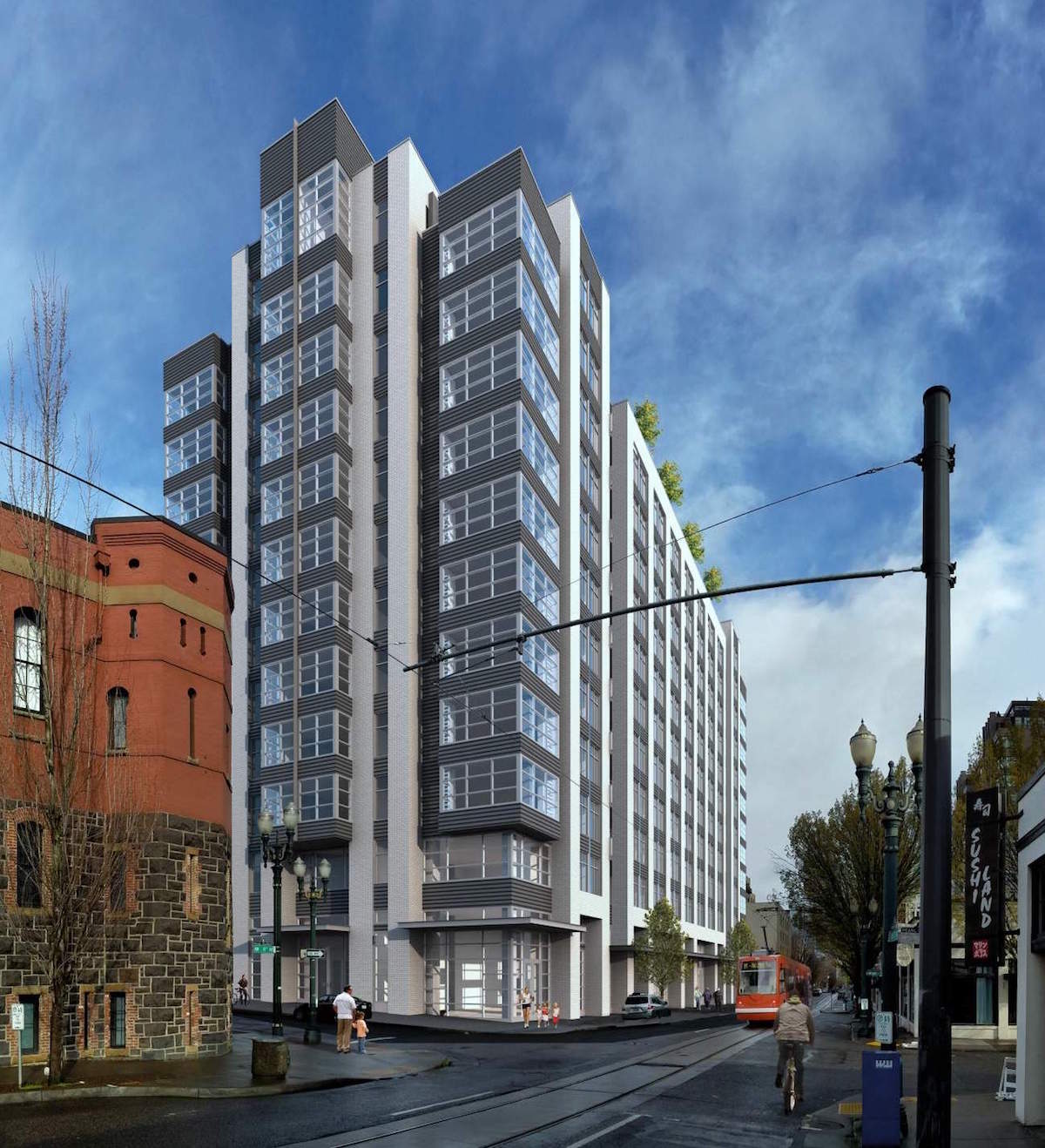
The site for the proposed building is the eastern half of the Pearl District block bound by NW 10th Ave, Davis St, 11th Ave and Everett St. The site includes four buildings, built between 1919 and 1941. Although none of the buildings are listed on the National Register of Historic Places, the buildings at 201 NW 10th Ave (designed by Morris H. Whitehouse) and 229 NW 10th Ave were ranked during the 1984 Historic Resource Inventory as potentially eligible for listing on the National Register as part of a Historic District. The building at 221 NW 10th Ave is currently home to jazz bar Jimmy Mak’s, which will be relocating to make way for the development.
Materials proposed for the building include a light colored brick and dark colored box rib metal panelling. VPI vinyl windows would be used at the residential units, and aluminum storefront glazing at the ground floor.
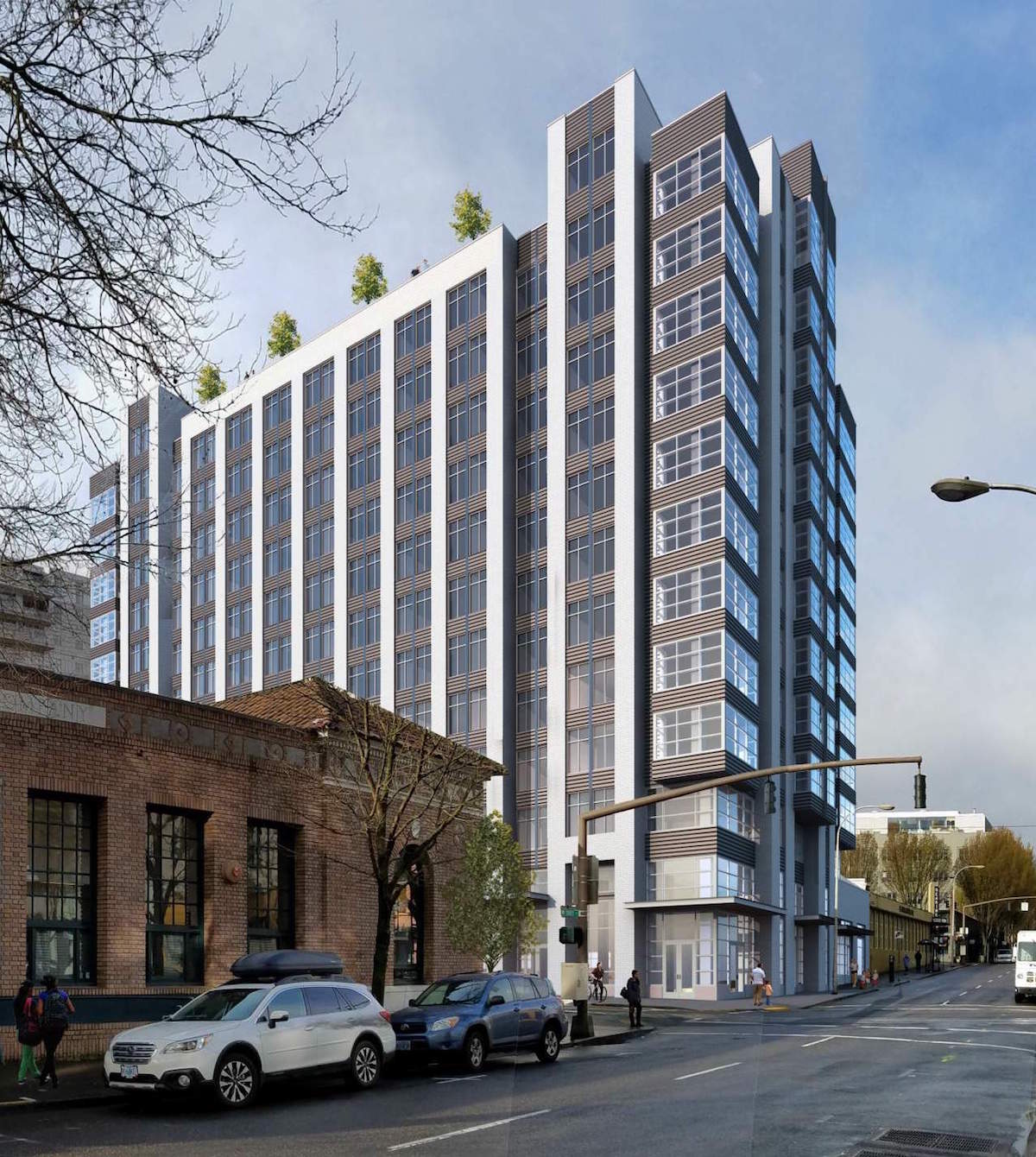
At the 12th floor the building would include four 2 bedroom penthouse units, each of which would have private terraces at the corners. The 12th floor would also be home to the building’s amenity features, including a fitness room, clubroom and two large exterior terraces.
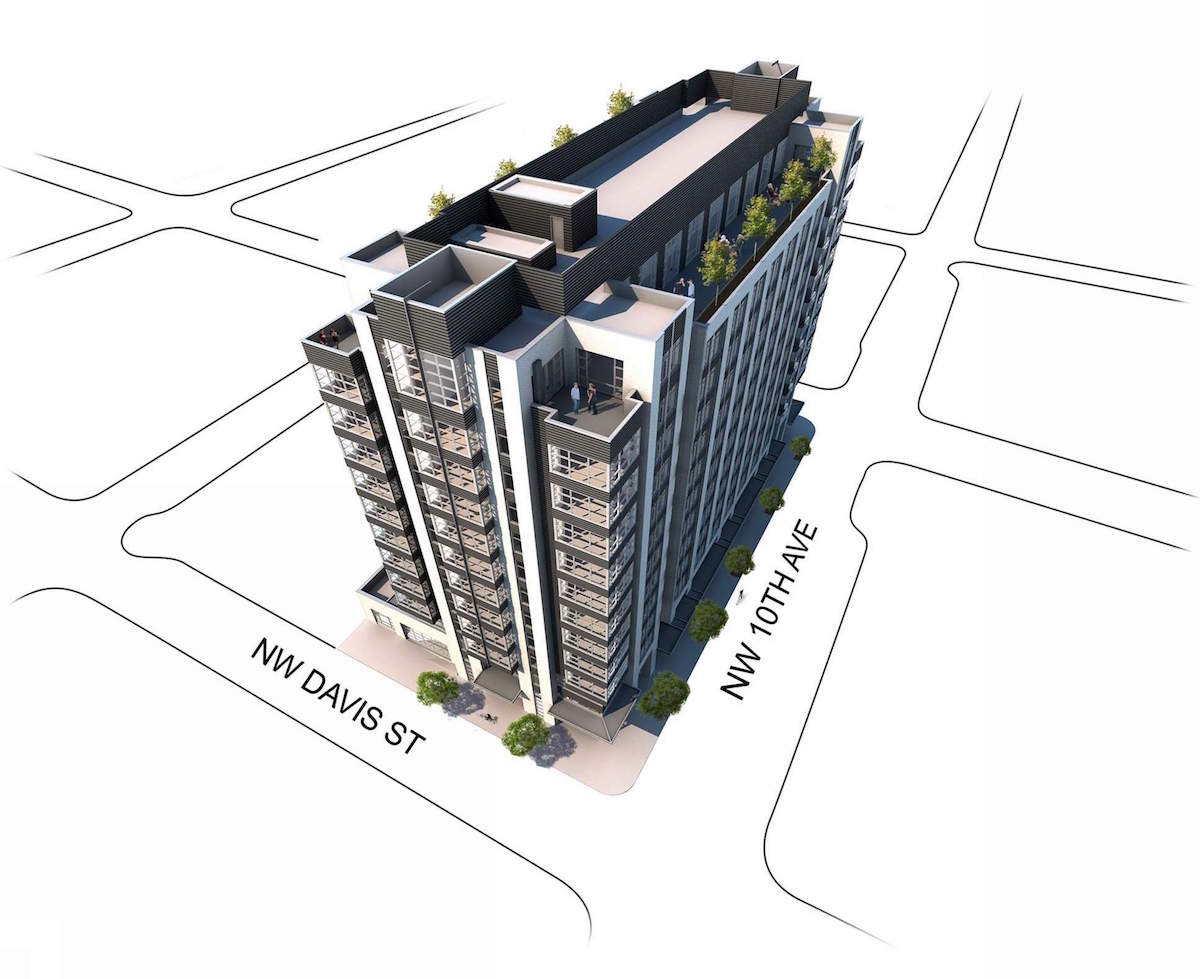
A memo [PDF] to the Design Commission, published before the April 7th advisory hearing, outlined potential areas for discussion. These included the residential lobby location, the elevation materials, and the desired location for utility transformers. The Design Commission generally supported the project, though expressed some concern about the amount of the box rib metal panel. A suggestion in the staff memo that the residential lobby be located on the more pedestrian-active NW Everett St, rather than NW Davis St, led to some debate about the best location for the lobby. The applicants explained that they were trying to add as much retail to NW Everett as possible, which a residential lobby could compromise. Commissioner Livingston suggested placing the lobby on NW 10th Ave, facing the streetcar line. Commissioner Wark expressed concern that would affect the retail continuity along NW 10th. Commissioner Livingston countered that the “Golden Age of the Pearl” buildings by Ankrom Moisan, including the Gregory, the McKenzie Lofts and the Elizabeth, all have mid-block residential lobbies with retail either side.
The applicants have the option of returning for a second Design Advice hearing, though are not required to do so. In order to gain approval the Modera Davis will need to go through a Type III Design Review with public hearings before the Design Commission.
Drawings
- Plan –
- Plan – Site
- Plan – Parking
- Plan – Ground
- Plan – Level 2
- Plan – Levels 3 to 11
- Plan – Level 12
- Plan – Roof
- Elevation – South
- Elevation – East
- Elevation – North
- Elevation – West
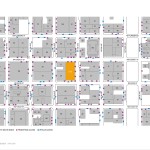
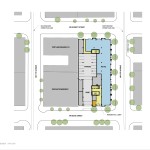
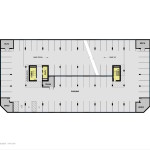
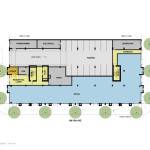
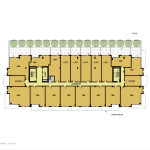
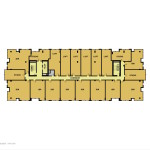
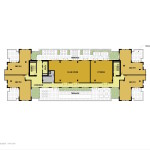
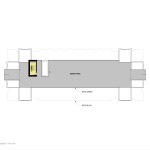
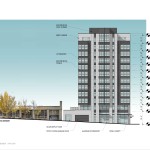
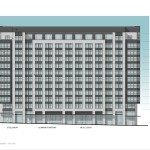
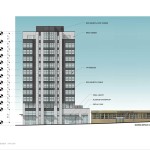
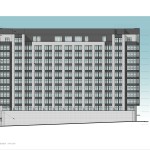
Why are there so many buildings in Portland named Modera? Has it become a euphemism for lackluster architecture in industry speak?
Buckman–Every apartment building Mill Creek is building is called Modera..whether it’s in Houston, Nashville or Portland. This is emblematic of what we’re getting for architecture right now–anywhere USA. Welcome to the new reality of large out of state institutional real estate investment in Portland. It is money that is agnostic of place or people. It simply goes where the market tells it. It’s up to Portland to demand more responsive building. Unfortunately we are not despite the appearance of it with our design review process and use of local firms.
I think this is actually one of the more responsive apartment buildings in the planning stages for Portland. You can debate whether the design is good or not, but there’s no doubt it borrows from the language of the neighborhood, albeit somewhat faux historically.
I’m tired of the ‘fish eye’ architectural renderings that are being produced. It doesn’t show the building accurately. This building almost appears to lean out towards the street. It makes the building appear more majestic than what will be built. Take away the ‘fish eye’ and this building is essential a rectangle and very boring.
The renderings from ground level are unrealistic in that, to the eye, there would be the third vanishing point in the sky, and the building would diminish toward the top. However, these renderings follow a long-time architectural photography tradition of using an 8 x 10 view camera, and shifting the front plate and lens upward to correct for the “Schleimflug effect” which is the building appearing to lean back as it diminishes toward that vanishing point. In this “corrected” view, all vertical lines appear vertical in the image, so that the top appears just as wide as the base. Creating a view from several blocks away would give a more realistic image, but mean other buildings would block the view, unless you showed scraped blocks in the foreground. The “aerial” view, while it is what you’d see from that point in the air, would be more acceptable if it were “view” from further back.
Yes increased density is needed. But at what cost? We need a better more nuanced mechanism for guiding this needed increased density. We are losing at least two wonderful buildings deserving to remain with this proposal. The North Pearl is almost entirely new development of high rise with a similar vintage of style and materials AND use. The original part of the Pearl contains a lovely collection of small scale buildings with remarkable adaptability referencing the evolution of Portland and the Western American city. One by one we are losing these buildings with a one size fits all approach to urban design. We need to recognize the importance of distinct districts and our code should affirm this importance. It doesn’t. It places a target on all buildings not at maximum build-able height. We need to demand more creativity and more quality. With the lowest financing costs in history and the highest rents in history, if we cannot demand these now when can we? How can one not be saddened when numerous surface parking lots remain and yet the wrecking ball falls on structure after structure worthy of more life. Not every structure needs to be kept but we are on the verge of losing the very urban fabric that has attracted many to this part of town. These buildings housed an industry that is the very heart of the transformation of America–the automobile. Yes most of these lovely simple buildings were auto repair shops and showrooms. Now look at how adaptable they are–filled with restaurants and brewpubs and local shops and jazz clubs and offices.Many of these businesses cannot afford the cost of new construction. We are not just demolishing buildings; we are putting people out of business. Replacing diversity with monoculture.The last auto shop was demolished just this year with a 14 story luxury apartment rising in its ruin. Again with the subject project we get yet another spreadsheet building maxing out all buildable space filled with studio and one bedroom rentals. 12 stories and yet only 6 two-bedroom units are planned below the penthouse level. All tiny apartments. forever. We don’t build buildings with the simple elegant adaptive qualities of the ones this project will demolish. We will get another single use spreadsheet building designed only to maximize the profits of institutional investors who do not care what kind of city portland becomes as long as the rent is paid. In 50 years will Portland need all these studio and one bedroom apartments? That will be our problem for these investors will long have gone with their profits out of town. Some before the last unit is leased as many are building simply to sell never to own and maintain. They are not evil. They are simply doing what the market tells them to do. It is up to us who live here to manage and balance the over reaches of the market forces. Many Portlanders assume we have the mechanism to do this. In fact we do not. Only a lackluster economy and mostly benevolent local development community is responsible for the unique place we call home. A place that this is becoming less of a place and more of a transaction.
I agree. I live in the neighborhood and am so sad the Kush carpet building is going to be demolished. It’s such a beautiful building with history and character. What can we do to stop this?
David- come to the next PDNA planning and transportation committee meeting on April 19th 6pm at Desk Hub in the Pearl. We are creating a task force to address these issues.
I’m all for density and adding more housing but this building is plain ugly. SERA’s faux historic motifs are getting old. The massing is unnecessarily complicated yet does nothing to make a better urban building – would be nice if the top one or two floors stepped back. And why are there trees on the roof? Those won’t be there – stop showing them in the renderings.